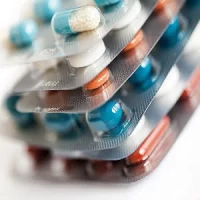Researchers at the University of Toronto have designed a diagnostic chip that can help reduce testing time for antibiotic resistance from days to one hour. This can enable doctors to select the right antibiotic from the very beginning. The work has been published in the journal Lab on a Chip.
Antibiotic resistance is a serious issue. According to Health Canada, superbugs have cost Canadians nearly $1 billion. Approximately two million people in the U.S. contract antibiotic-resistant infections and at least 23,000 people die as a direct result. The tests for antibiotic resistance that are in use today take around three days to come back from the lab. This can greatly hinder the doctor’s ability to treat bacterial infections quickly.
Justin Besant and his team at U of T have designed a small and simple chip to test for antibiotic resistance in just one hour thus providing doctors the opportunity to pick the most effective antibiotic to treat potentially deadly infections. The chip concentrates bacteria in a miniscule scale increasing the effective concentration of the starting sample.
The bacteria are tested through microfluidic wells patterned onto a glass chip. Each filter contains a lattice of tiny microbeads which catches the bacteria as the sample flows through. Bacteria accumulate in the well and are trapped with the antibiotic and the molecule resazurin. The bacteria metabolise resazurin into resorufin. If the bacteria are killed by the antibiotic, they stop metabolising resazurin and if the bacteria are antibiotic-resistant, then they will continue to metabolise resazurin into resorufin.
“Our approach is the first to combine this method of increasing sample concentration with a straightforward electrochemical readout,” says Professor Sargent. “We see this as an effective tool for faster diagnosis and treatment of commonplace bacterial infections.”
“The electronics for our electrochemical readout can easily fit in a very small benchtop instrument, and this is something you could see in a doctor’s office, for example,” says Besant. “The next step would be to create a device that would allow you to test many different antibiotics at many different concentrations, but we’re not there yet.”
Source: University of Toronto
Image Credit: Wikimedia Commons


![Tuberculosis Diagnostics: The Promise of [18F]FDT PET Imaging Tuberculosis Diagnostics: The Promise of [18F]FDT PET Imaging](https://res.cloudinary.com/healthmanagement-org/image/upload/c_thumb,f_auto,fl_lossy,h_184,q_90,w_500/v1721132076/cw/00127782_cw_image_wi_88cc5f34b1423cec414436d2748b40ce.webp)






